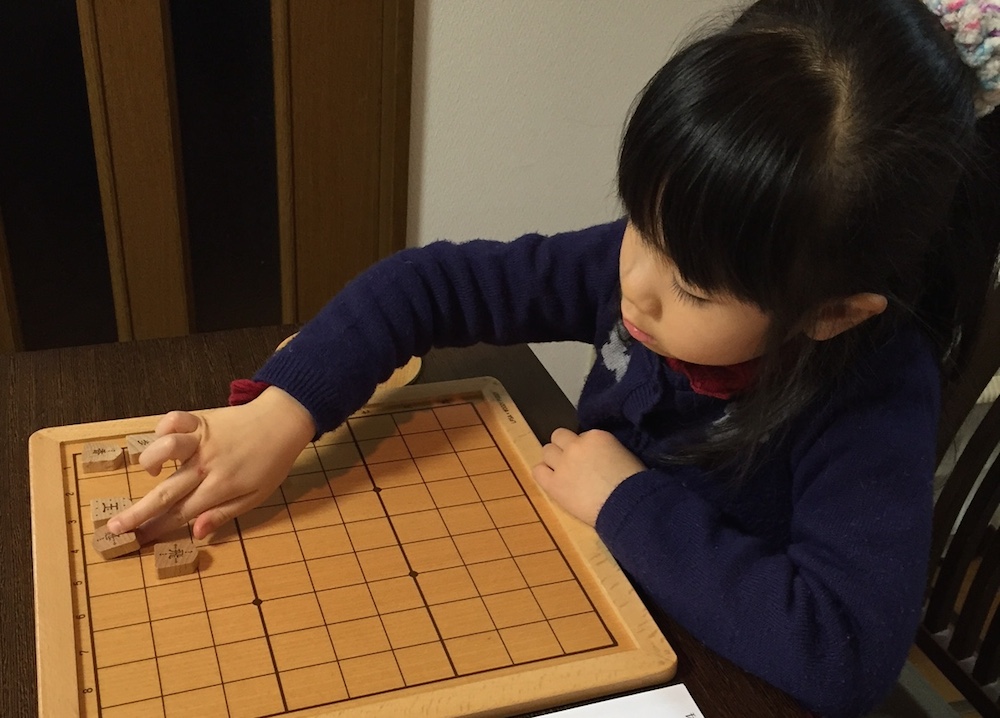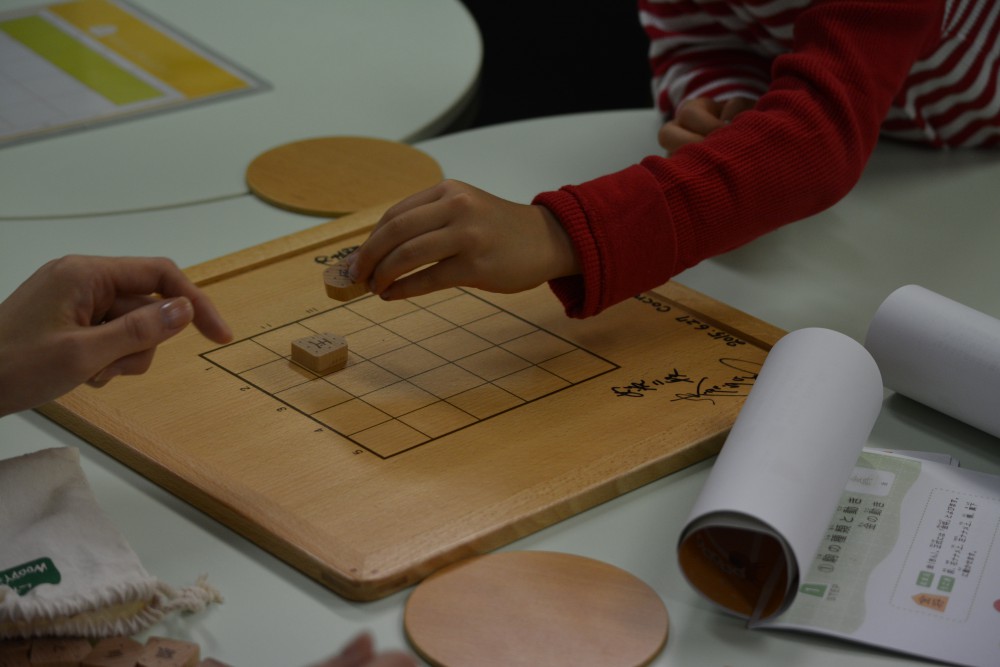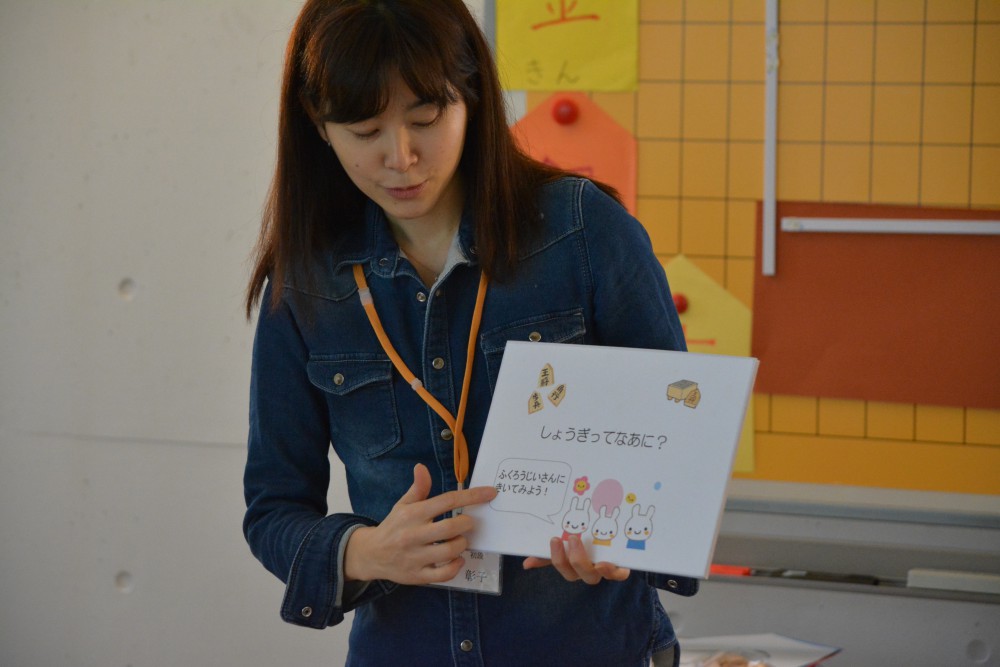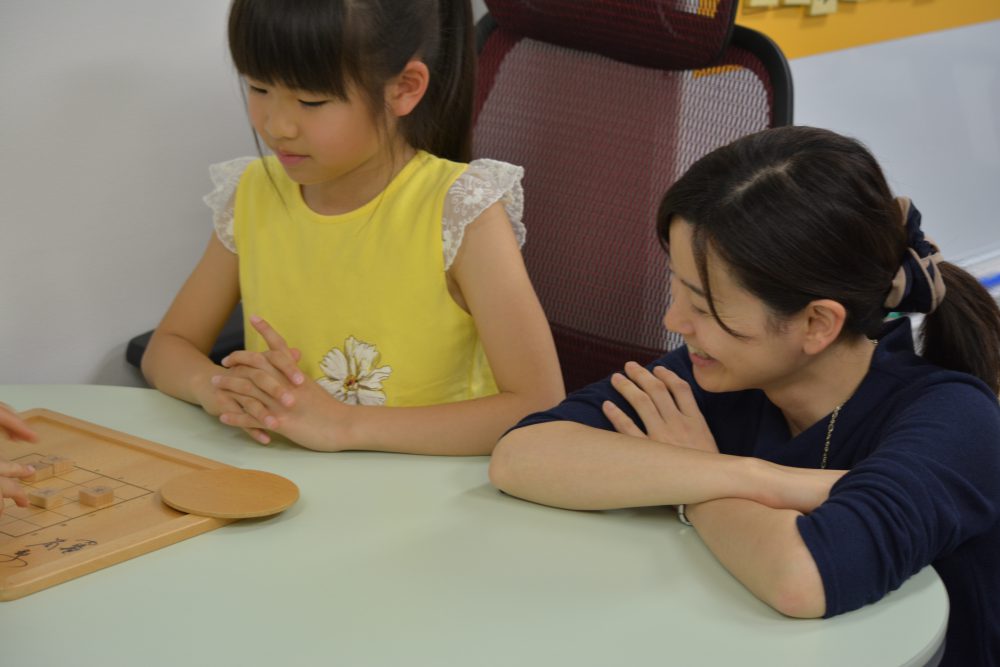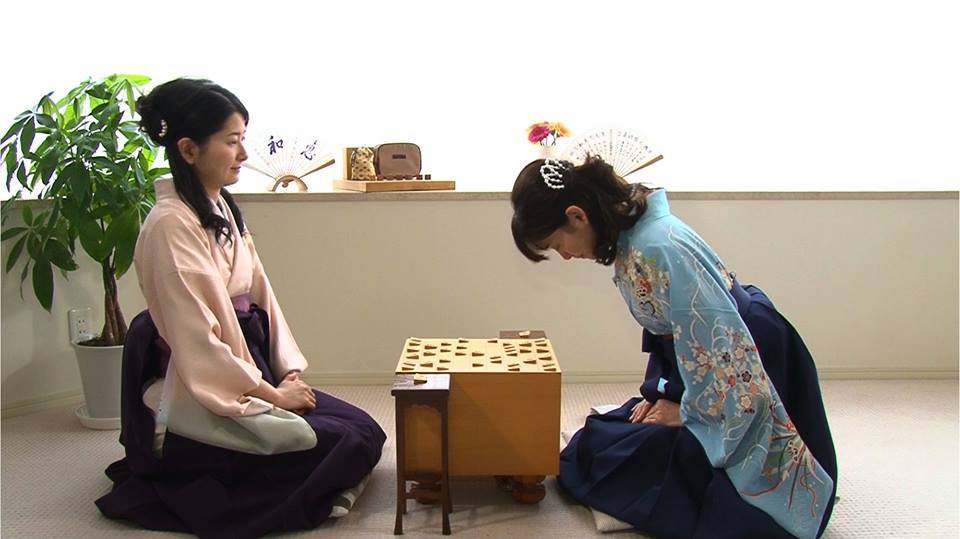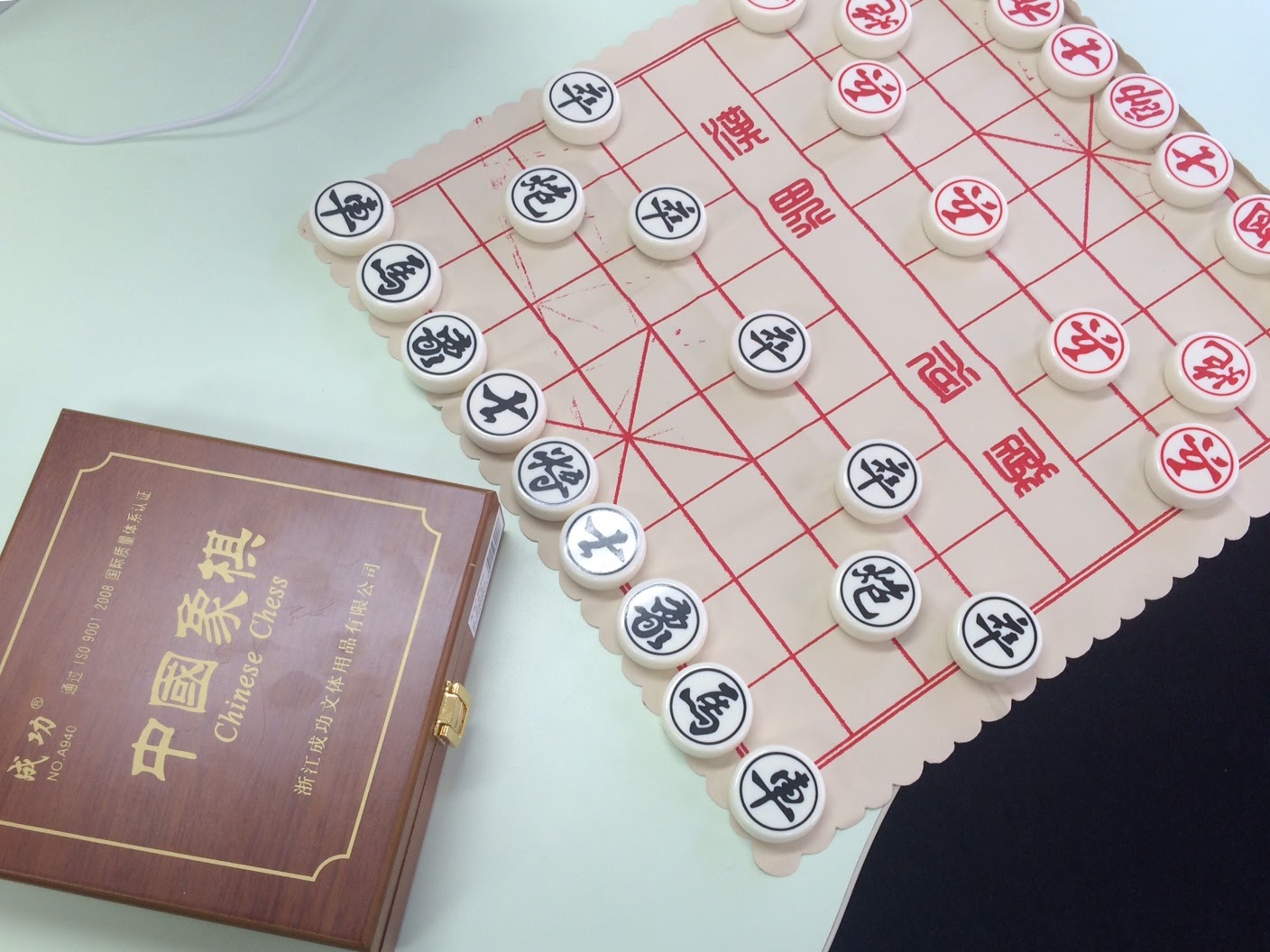I-tsu-tsu Blog
Shogi
-
Shogi Rules – How to Play Shogi – : – Step 1-5 Capture Shogi Pieces –
Explore art of Shogi. A professional Shogi player invites you to the world of Shogi along with tra-ditional Japanese culture. Let’s practice how to capture pieces today. The previous step When you capture the opponent’s piece, you place it on the piece stand. The captured piece is called “Mochigoma (your piece in hand)” and you can reuse it. In the past lesson, I told you that Shogi ancestor which was originated in India disseminated to many countries to be various types of Shogi brothers. However, reusing captured pieces as yours is a unique feature that is found only in Shogi rules. Please lay out the captured pieces nicely. I often
Akiko Nakakura 24 October 2016
-
Shogi Rules – How to Play Shogi – : Step 1-4 Change of Piece Moves
Explore art of Shogi. A professional Shogi player invites you to the world of Shogi along with tra-ditional Japanese culture. You now know the moves of Gyoku (King), Kin (Gold) and Gin (Silver). However, the moves of those pieces actually change depending on the situation. Yet, it is not difficult to understand. The previous step Board walls, the right and left edge files on a board and the opponent’s pieces affect and change moves of your pieces. Let’s check Gyoku’s (King’s) moves. For example, if Gyoku (King) is located at the bottom, the moves it can make are indicated with the red circles in the picture below. When Gyoku (King) is touching the right wall, the moves it can make
Akiko Nakakura 24 October 2016
-
Shogi Rules – How to Play Shogi – : Step 1-3 Shogi Piece Types
Explore art of Shogi. A professional Shogi player invites you to the world of Shogi along with tra-ditional Japanese culture. We will learn piece moves today. Shogi has 8 types of pieces. The previous step The most important one is Gyoku (King). This piece is also called “OUSAMA” or “OU,” and it means King in Japanese. Many Shogi pieces have names of jewels, and thus, originally, only Gyoku (King) was used. Yet, the names for the piece changed in the course of history. The piece now has two names; Gyoku and Ou (King) . Generally, Gyoku (King) is used for novices or younger players and Ou is for instructors or older players as manners of Shogi. This rule
Akiko Nakakura 24 October 2016
-
Shogi Rules – How to Play Shogi – : Step 1-2 Shogi Piece Types
Explore art of Shogi. A professional Shogi player invites you to the world of Shogi along with traditional Japanese culture. This is our second lesson, so let’s learn the variety of Shogi pieces. The previous step You may think that Shogi has many different pieces and it is difficult to learn their names and moves. However, you can memorize them little by little. Well, how many types of pieces do you think Shogi has? There are eight types; Gyoku (King), Hi/Hisha (Rook), Kaku (Bishop), Kin (Gold), Gin (Silver), Kei/Keima (Knight), Kyo/Kyosha (Lance), Fu (Pawn). Consider Gyoku (King) as yourself. I think that helps you understand Shogi rules better and easier. You lose if your Gyoku (King) is captured
Akiko Nakakura 24 October 2016
-
Shogi Rules – How to Play Shogi – : Step 1-1 Greetings
Explore art of Shogi. A professional Shogi player invites you to the world of Shogi along with traditional Japanese culture. Hello. I’m Akiko Nakakura, a professional Shogi player. I would like to share my Shogi lessons with you on our blog of I-tsu-tsu Co., Ltd. Our students are young sisters; Kaori aged 5 and Ayumi aged 8. They want to learn Shogi secretly so that they can surprise their grandfather who loves Shogi on his birthday. We hope you can join us and enjoy learning Shogi from lesson 1-1. I am also thrilled to see the young girls’ growth through learning Shogi. Step 1-1 is about greetings. Shogi has three
Akiko Nakakura 24 October 2016
-
Enjoy Shogi with People in the World!
One attractive point of Shogi is that we can play it with anybody regardless of gender or age of a player. Age gap or physical strength difference between the players does not matter to play Shogi in a serious match. Well, you may say, “Isn’t that possible only in Japan?” Truly, Japanese Shogi is played most in Japan. However, brothers of Shogi are being played even at this moment in somewhere in the world. Chess and Shogi have a common ancestor. Thus, they are brothers. As a matter of fact, Shogi has many other brothers in the world. I would like to talk about Shogi’s ancestor and four brothers in
Akiko Nakakura 19 October 2016
-
Five Tips from a Professional Player for Children
Explore art of Shogi. A professional Shogi player invites you to the world of Shogi along with traditional Japanese culture. Today, I would like to share more specific points that instructors and parents should keep in mind when teaching children Shogi. 1. Find many upsides of children Some instructors may think that novice children do not have many upsides due to their lack of technical skills. However, they actually have many good points in their behaviors and attitudes towards Shogi. For example, they can lay out pieces properly on the board, neatly place pieces in hand on the piece stand, and exchange appropriate greetings. Instructors should look at those and
Akiko Nakakura 19 October 2016
-
Only One Thing to be a Strong Shogi player for Children
As posted here before, the most frequently asked question to me, as a professional Shogi player, is how to improve one’s ability for Shogi. My answer was always the same, “You know, that is what I really want to know.” Yes, I should have made a better answer. Now, I am going to make a better answer, intending about 5-year-children who have just got a basic rule of Shogi, say about 10 Kyu (a kind of ranks given to relatively low-ranked players). As far as I know, most children who have just learned a basic Shogi rule just got to know Shogi, or to be interested in Shogi. They came
Akiko Nakakura 19 October 2016
-
Five Enjoyable Approaches to Learn Shogi
Today, I would like to talk about Shogi learning methods for novice players. “What should I do to be strong?” This is the question that I am often asked. The standard answer is as follow. “You should copy pros’ piece moves, solve Tsume Shogi or Mate problems, and take part in actual matches.” Yet, for those beginners who want to learn Shogi as a hobby, I would like to introduce more enjoyable learning approaches today since all the Shogi beginners are not hoping to be a pro in the future. Some play Shogi just for fun. Others play Shogi to enhance academic skills, or as a family entertainment. People have
Akiko Nakakura 19 October 2016
-
Five Points for Successful Shogi Learning
Explore art of Shogi. A professional Shogi player invites you to the world of Shogi along with traditional Japanese culture. I’d like to talk about five things that many beginners often fail today. Novice players can make a quick progress if they can avoid them. I think that the best and authentic way to learn Shogi is through trial and fail. So, you had better play Shogi with various different opponents many times. However, it is quite hard to keep playing without knowing your problems. So, I would like to share some points that many novice players often stumble into, and how to overcome those. I hope my tips will
Akiko Nakakura 19 October 2016
-
Five Trivia on Shogi
Shogi did not come out of the blue to be a popular game in Japan. As a matter of fact, its ancestor was originated in India, a game called “Caturaṅga.” Caturanga came to Japan, and developed adjusting unique elements of Japan. Shogi added some new pieces and discarded some of the ancestor’s pieces on the way of the evolution. Today, I’d like to share five particularly interesting stories about Shogi. I’m sure that you feel like talking them to your children. 1. Japanese Shogi and the western chess are brothers! Shogi has brothers all over the world. The western chess is also popular in Japan, and I think many people
Akiko Nakakura 19 October 2016
If there is anything we can help you with,or you have any questions,
please do not hesitate to contact us.
